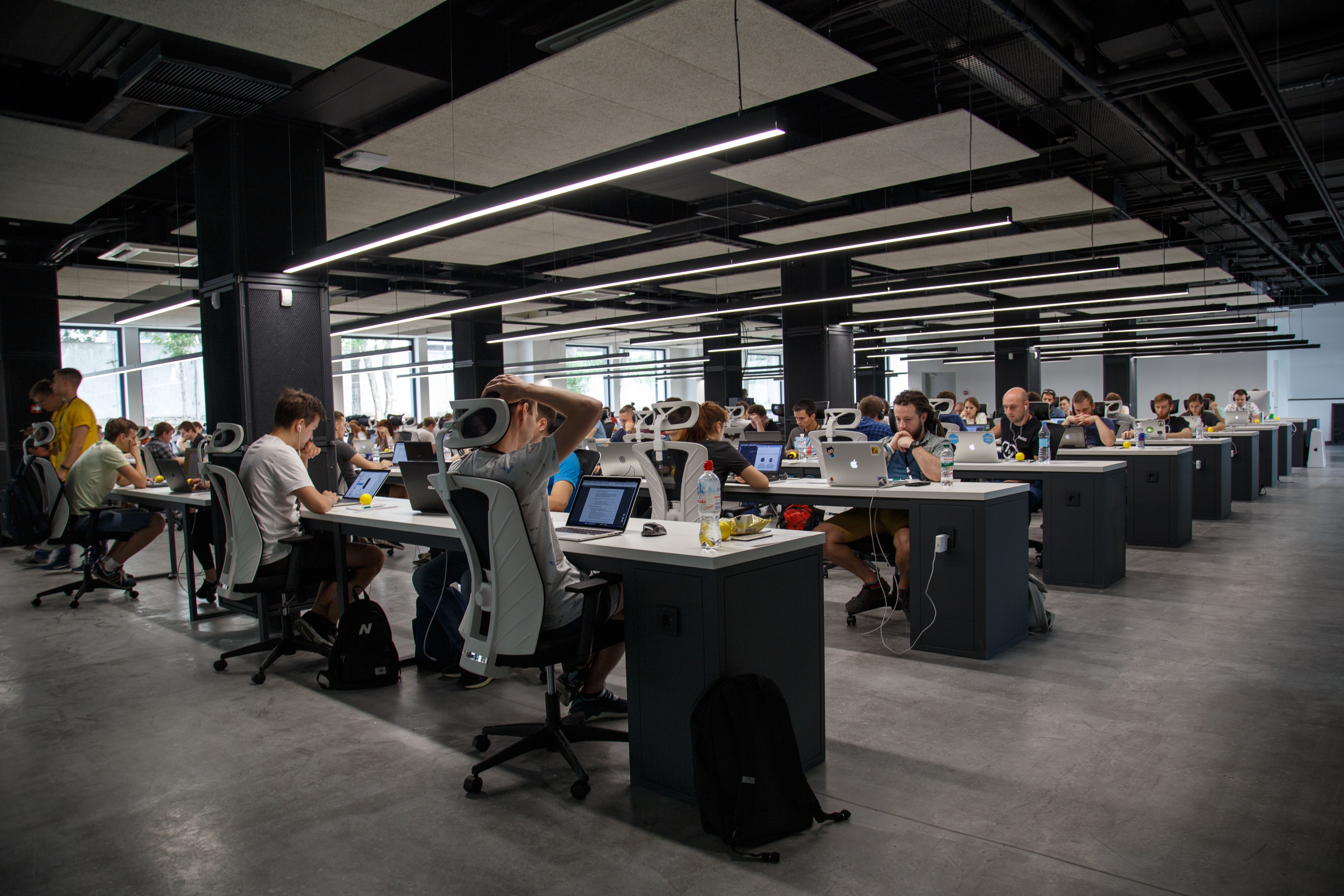 Open office plans are common with startups and trendier technology companies to foster collaboration in the workplace. The goal is to have an open area where people can see, hear and interact with each other throughout the workday. Employers not only save money with this plan but hope it facilitates teamwork.
Open office plans are common with startups and trendier technology companies to foster collaboration in the workplace. The goal is to have an open area where people can see, hear and interact with each other throughout the workday. Employers not only save money with this plan but hope it facilitates teamwork.
In the United States, 80% of offices are designed with an open plan. With leading companies such as Google and Facebook adopting this layout, others may see this design as a sign of a successful, forward-thinking company and follow suit as a result. Josh Silverman, a tech entrepreneur, felt working in an open office space was a positive thing. "What an open office environment taught me was the ability to focus in on the task at hand in any situation, no matter the distraction. It has enabled me to work literally anywhere I need to, which has been an invaluable skill as an entrepreneur."
Some people feel that it encourages the flow of ideas among employees and two-thirds of workers believe it has the potential to promote collaboration. However, the cons of an open office plan are a decrease in productivity for some employees, an increase in sick time and just over half of high-performing employees find it distracting as they are interrupted every three minutes throughout the workday.
Not everyone loves the idea of an open, collaborative workspace, especially those who are more sensitive to noise. Some people feel that it inhibits their productivity because of the constant distractions around them from their co-workers and of course there is the lack of privacy when an employee does need to make a private call to set up a doctors appointment. Cheryl Smithem, a professional in the PR space, says it wouldn't work for her. "I'm one of those folks that if someone is talking next to me or down the hall or around the corner or if there's background music with lyrics it totally removed my ability to stay concentrated on my task."
Other employees feel awkward because if they do stand up to go talk to someone, everyone sees exactly what they are doing so they feel self-conscious. Plus people may feel uncomfortable interrupting a colleague (and those around him or her), so they may be more inclined to send an email rather than having an in-person conversation, which is the whole goal of an open-plan office.
It turns out the collaboration and teamwork that was expected by these plans may not be happening. A recent study by the Harvard Business School discovered that in an open office, employees actually have less interaction than they do when there is some kind of boundary while electronic communications such as email or chat actually increased by up to 50%. The study’s authors describe it as follows: “Like social insects which swarm within functionally-determined zones ‘partitioned’ by spatial boundaries (e.g. hives, nests or schools), human beings — despite their greater cognitive abilities — may also require boundaries to constrain their interactions, thereby reducing the potential for overload, distraction, bias, myopia and other symptoms of bounded rationality…”
Multiple studies highlight other negative aspects of an open plan. A study from Karlstad University in Sweden, published in Scandinavian Journal of Work, Environment & Health discovered that a shared workplace led to less satisfied employees and a decrease in the sense of well-being. The University of Canterbury reported that an open office plan is actually bad for mental health. "There was evidence that they increase sickness, absence and emotional cognitive irritation, and decrease mental work ability and productivity and job satisfaction." Additional research published in the Journal of Environmental Psychology, and based on 42,764 surveys, noted that open plan offices have a significantly higher rate of employee dissatisfaction than enclosed offices.
This complete transparency in terms of people being seen all the time, and lack of a spatial boundary, could lead to surveillance anxiety which is when people feel they are in constant observation mode or feeling that they are being monitored. As employees feel more anxious, they try to look busy and tend to avoid interaction with her co-workers to avoid being in the spotlight.
The bottom line is that positioning a group of people together does not necessarily guarantee collaboration or communication. Look at any crowded situation where people are forced to be in a setting where they are packed closely together, such as an elevator or a crowded market. Proximity alone is not the answer and workplaces are not one-size-fits-all.
An open-plan that encourages discussion throughout the workday may not be the right environment for every workplace and the research clearly shows it is not the best option for every personality. Although employers who advocate for this open plan setup save money due to practicalities around office configuration, the cost savings could result in a decline in productivity, increase in sick time, and decrease in satisfaction, which makes this option worth reconsidering. Employers may need to take a closer look at their own open-plans and ask if the trade-off is worth it. Dr Paul Kegel, an instructor in Innovation & Entrepreneurship at Full Sail University, sums it up this way: "You can’t really say that an open office environment is good or bad for collaboration. The most important thing to consider is …what is the activity that needs to be done and who will be doing the activity? Once you have the answer to these questions, you can design the most effective environment."
Tina Arnoldi, MA is a marketing consultant and freelance writer in Charleston SC. Learn more about her and connect at TinaArnoldi.com